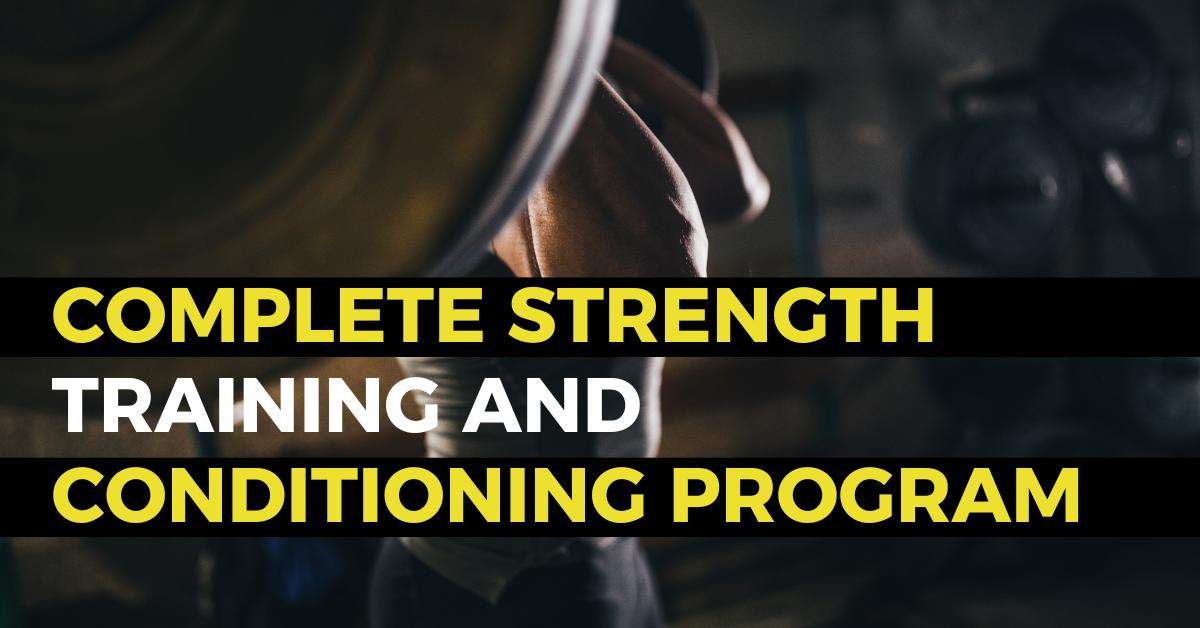
Achieving peak athletic performance requires more than just strength; it demands a well-rounded approach that includes conditioning, endurance, and flexibility. A complete strength training and conditioning program is essential for anyone looking to enhance their overall fitness and excel in their sport. Whether you’re an athlete or simply looking to improve your physical capabilities, this guide will provide you with the essential components of a program designed for peak performance.
What is a Strength Training and Conditioning Program?
A strength training and conditioning program combines exercises that build muscle strength with activities that improve cardiovascular endurance, flexibility, and overall physical conditioning. The goal is to develop a balanced physique that can perform at its best in any physical activity, from daily tasks to competitive sports.
Key Components of a Strength Training and Conditioning Program:
- Strength Training:
- Strength training focuses on increasing muscle mass, strength, and power. It involves exercises like squats, deadlifts, bench presses, and rows, which target major muscle groups. These exercises are typically performed with free weights, machines, or resistance bands.
- Conditioning:
- Conditioning exercises aim to improve cardiovascular endurance, speed, agility, and overall stamina. This can include activities like running, cycling, plyometrics, and circuit training. Conditioning helps your body handle sustained physical activity and recover more quickly.
- Flexibility and Mobility:
- Flexibility and mobility exercises, such as stretching, yoga, and dynamic warm-ups, are crucial for maintaining a full range of motion in the joints and preventing injuries. These exercises ensure that your muscles and joints can move freely without restriction.
- Recovery and Rest:
- Recovery is an essential part of any strength training and conditioning program. Incorporating rest days, proper nutrition, and techniques like foam rolling or massage can help your muscles repair and grow stronger after intense workouts.
Benefits of a Strength Training and Conditioning Program
Engaging in a well-structured strength training and conditioning program offers numerous benefits that go beyond just building muscle. Here’s how it can help you reach peak performance:
- Improved Athletic Performance:
- A comprehensive program enhances your strength, speed, agility, and endurance, all of which are critical for athletic performance. Whether you’re training for a marathon, a sports competition, or just improving your fitness, this program will help you achieve your goals.
- Injury Prevention:
- Strengthening muscles and improving flexibility can significantly reduce the risk of injuries. Conditioning also prepares your body to handle the physical demands of your sport or activity, making you less susceptible to strains and sprains.
- Enhanced Metabolism:
- Strength training increases muscle mass, which in turn boosts your metabolism. This helps you burn more calories at rest and during exercise, making it easier to maintain a healthy weight.
- Balanced Physique:
- By targeting all major muscle groups and incorporating a variety of exercises, a strength training and conditioning program helps you develop a well-balanced physique. This balance is key to achieving peak performance in any physical activity.
- Mental Toughness:
- Consistent training builds not only physical strength but also mental resilience. Pushing through challenging workouts helps develop the mental toughness needed to overcome obstacles in both sports and life.
Creating Your Strength Training and Conditioning Program
To create an effective strength training and conditioning program, it’s important to include a variety of exercises that target different aspects of fitness. Here’s a sample weekly plan that balances strength, conditioning, and recovery:
Day 1: Strength Training (Upper Body)
- Warm-Up: 10 minutes of light cardio (e.g., jogging, cycling)
- Bench Press: 4 sets of 8-10 reps
- Bent-Over Rows: 4 sets of 8-10 reps
- Overhead Press: 3 sets of 8-10 reps
- Bicep Curls: 3 sets of 12-15 reps
- Tricep Dips: 3 sets of 12-15 reps
- Cool-Down: 5-10 minutes of stretching
Day 2: Conditioning
- Warm-Up: 10 minutes of dynamic stretching
- HIIT Workout: 20-30 minutes of high-intensity interval training (e.g., sprints, cycling, or plyometrics)
- Core Work: Planks, Russian twists, leg raises (3 sets of each, 15-20 reps)
- Cool-Down: 5-10 minutes of stretching
Day 3: Rest or Active Recovery
- Active Recovery: Light activities such as walking, swimming, or yoga
- Foam Rolling: Focus on major muscle groups to reduce soreness and improve flexibility
Day 4: Strength Training (Lower Body)
- Warm-Up: 10 minutes of light cardio
- Squats: 4 sets of 8-10 reps
- Deadlifts: 4 sets of 8-10 reps
- Leg Press: 3 sets of 10-12 reps
- Lunges: 3 sets of 10 reps per leg
- Calf Raises: 3 sets of 15-20 reps
- Cool-Down: 5-10 minutes of stretching
Day 5: Conditioning
- Warm-Up: 10 minutes of dynamic stretching
- Steady-State Cardio: 30-45 minutes of running, cycling, or rowing at a moderate pace
- Agility Drills: Ladder drills, cone drills, or box jumps (3 sets of each)
- Cool-Down: 5-10 minutes of stretching
Day 6: Flexibility and Mobility
- Yoga or Pilates: 45-60 minutes focusing on stretching and mobility
- Foam Rolling: Focus on areas that feel tight or sore
Day 7: Rest
FAQs About Strength Training and Conditioning Programs
1. How long should a strength training and conditioning program last?
A well-rounded program should be ongoing, with cycles of varying intensity and focus. Typically, athletes follow an annual plan that includes periods of strength building, conditioning, and recovery. However, if you’re just starting, a 12-week program can provide a solid foundation.
2. Can I do strength training and conditioning on the same day?
Yes, you can combine strength and conditioning in the same workout session. However, it’s important to manage the intensity and volume to avoid overtraining. For instance, you might focus on strength training first, followed by a shorter, less intense conditioning session.
3. Is a strength training and conditioning program suitable for beginners?
Absolutely! Beginners can benefit from a well-structured program that starts with basic exercises and gradually increases in intensity. It’s important to focus on proper form and technique, possibly with the guidance of a trainer, to build a strong foundation.
4. What should I eat to support my strength training and conditioning program?
Nutrition plays a critical role in supporting your training. A balanced diet rich in protein, complex carbohydrates, healthy fats, and plenty of fruits and vegetables will fuel your workouts and aid in recovery. Hydration is also key, especially during intense conditioning sessions.
5. How do I prevent burnout in a strength training and conditioning program?
To prevent burnout, it’s essential to incorporate rest days, vary your exercises, and listen to your body. If you’re feeling overly fatigued, it might be time to adjust your program or include more recovery time. Setting realistic goals and tracking your progress can also help maintain motivation.
Conclusion
A complete strength training and conditioning program is essential for anyone looking to achieve peak performance. By balancing strength, conditioning, flexibility, and recovery, you can build a well-rounded fitness foundation that enhances both your athletic abilities and overall health. Whether you’re a seasoned athlete or just starting, this program can help you reach your full potential.



